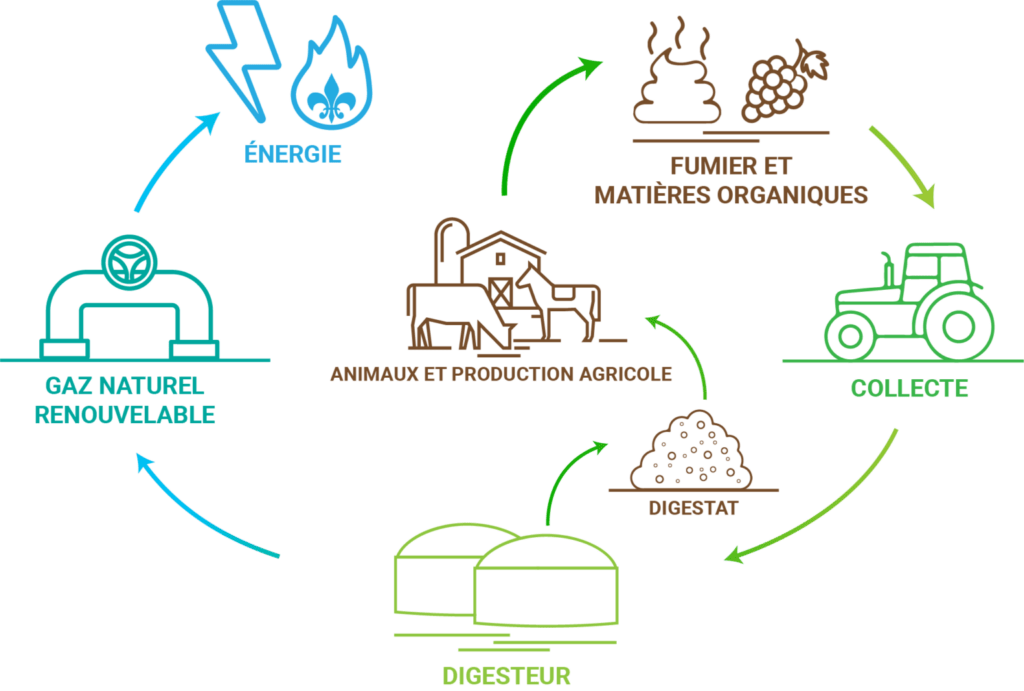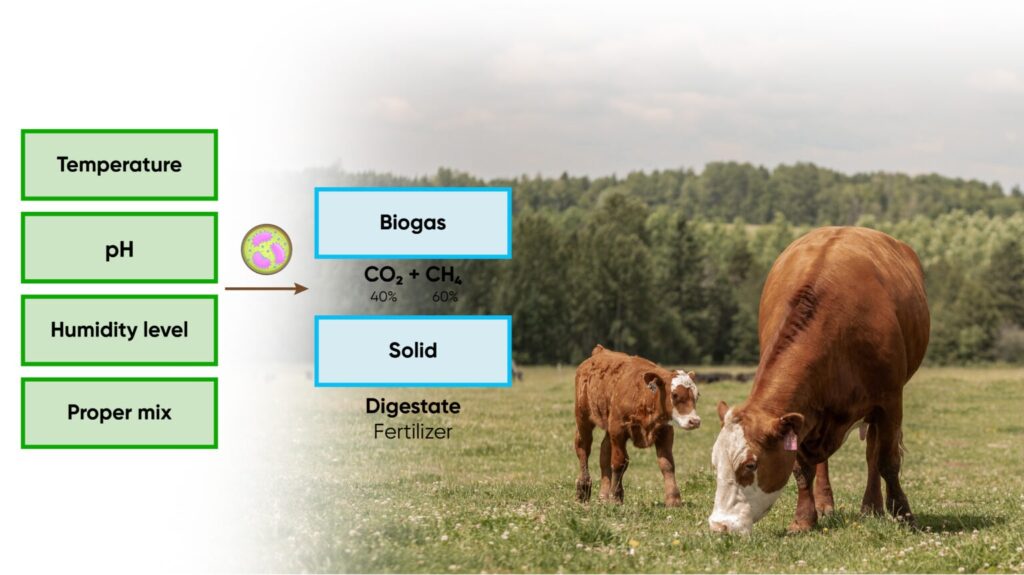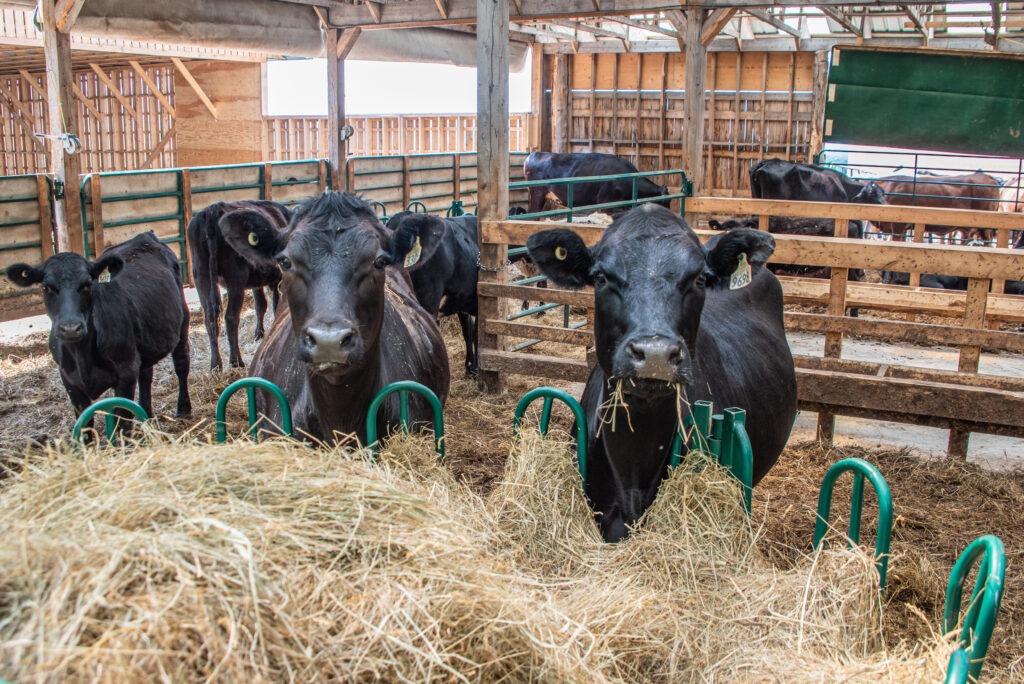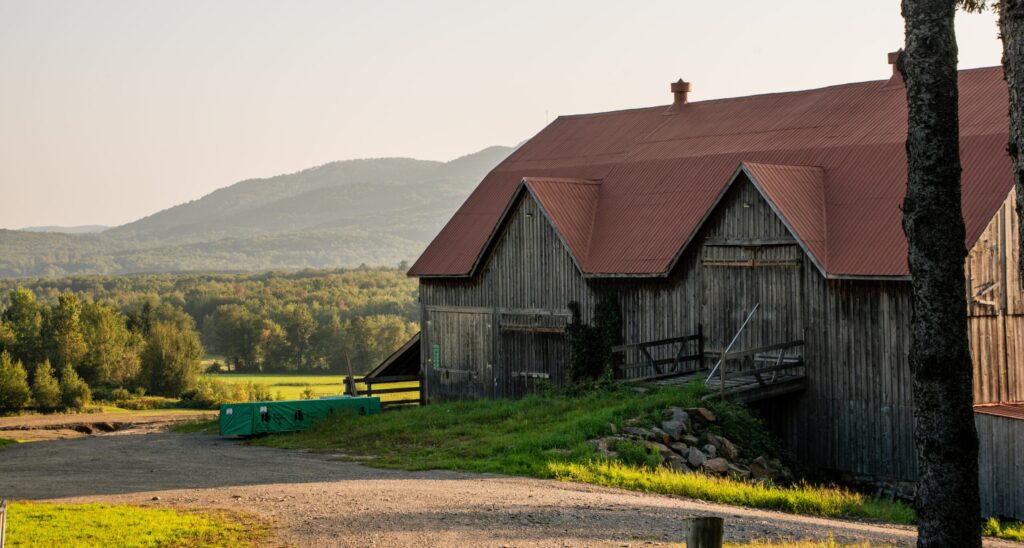The Rise of Biomethanization
Introduction
The rise of biomethanization : Biomethanization is gaining traction as a solution to reduce waste, generate clean energy, and mitigate climate change. In an era when sustainability is paramount, this emerging process could reshape how we manage organic waste and produce renewable energy. In this article, we’ll explore what biomethanization is, how it’s being implemented worldwide, and why it’s only now starting to take root in Canada—highlighting our innovative GNR Shefford project led by Paul Sauvé in Shefford, Quebec.
What is Biomethanization?
At its core, biomethanization is the process of breaking down organic materials, like food and agricultural residues, to produce biogas. This process mimics the natural decomposition of organic matter but accelerates it under controlled conditions, turning it into valuable resources.


How it Works:
-
- Anaerobic Digestion: Organic matter is placed in an environment where bacteria break it down without oxygen (anaerobically). This produces methane, which can then be captured and used as a clean energy source.
-
- Biogas Production: The biogas is made up mainly of methane (CH₄), which can be used for heating, electricity, or even as vehicle fuel.
-
- Digestate: What’s left behind is a nutrient-rich material known as digestate, which can be used as fertilizer for soil improvement, completing a circular process.
How Biomethanization is Implemented Around the World
Globally, the potential of biomethanization has been recognized as part of broader efforts to reduce reliance on fossil fuels, manage waste, and lower greenhouse gas emissions.
Biomethanization has been widely embraced in Europe, particularly in Germany, Sweden, and Austria, where comprehensive waste management systems and government policies encourage its growth. For instance, Germany has established itself as a leader in biomethanization, with a significant number of biogas plants and clear policy frameworks supporting renewable energy from organic waste (source : IEA Bioenergy, 2022). Over 10,000 biogas plants process agricultural, food, and organic waste, providing a significant portion of the country’s renewable energy needs (source : World Biogas Association, 2019).
Even in California, state laws mandating organic waste diversion, such as SB 1383, have led to several biomethanization facilities being established to convert organic waste into renewable energy, as seen in projects like the Rialto Bioenergy Facility, one of the largest anaerobic digestion plants in the U.S. (Anaergia, n.d.). With all these initiatives, California aims to reduce landfill disposal of organics by 75 percent by 2025, based on 2014 levels (source : California State Legislature, 2015).
Why Biomethanization Hasn’t Grown Popular in Canada (Yet)
While countries around the globe have embraced biomethanization, Canada has been slower to adopt the technology at a wide scale. Several factors contribute to this, including:
-
- Infrastructure Limitations: Biomethanization requires a significant upfront investment in infrastructure, such as anaerobic digesters and distribution systems.
-
- Climate Challenges: Canada’s cold climate can pose challenges for year-round organic matter processing, as the bacterial processes in anaerobic digestion are more efficient at warmer temperatures. However, advancements in technology are helping overcome these issues.
-
- Lack of Awareness: Although Canadians are increasingly aware of the environmental benefits of renewable energy, biomethanization isn’t as well known as other forms of waste management like recycling or composting. There’s a need for education and outreach to show the positive impact of biogas production and how it can be integrated into daily life.
The GNR Shefford Project: A Local Breakthrough in Quebec
Despite these challenges, biomethanization is starting to gain popularity in Canada, and Paul Sauvé’s GNR Shefford project in Quebec, represents a significant leap forward in the province, but also in the country’s efforts to adopt this technology.
GNR Shefford and its cutting-edge facility represent an initiative to provide renewable energy to the local grid, with the added benefit of producing valuable fertilizers for agriculture. The project is designed to process organic waste from local agricultural producers to produce biogas and make a better, green, natural digestate : a powerful source of balanced nutrients that can be returned to the earth to nourish agricultural plots.

Key Features of GNR Shefford:
-
- Sustainable Waste Management: GNR Shefford will process local organic waste and use it to produce clean energy and digestate, a superior fertilizer.
-
- Community-Centered: The project is designed to serve the community by contributing to the creation of local jobs, creating a localized model that could be replicated in other parts of Quebec and Canada.
-
- Energy and Economic Benefits: The facility will provide green renewable energy while generating new economic opportunities in the region.
The GNR Shefford project is poised to play a critical role in Quebec and Canada’s transition to renewable energy and waste management solutions. By integrating biomethanization into the local infrastructure, it sets a precedent for how communities across the country can reduce their environmental footprint and move toward a more circular economy.
The Future of Biomethanization in Canada
With the success of the GNR Shefford project, there is hope that biomethanization will become more widespread across Canada. The growing interest in sustainable resource management solutions, alongside government support for green technologies, makes it likely that we will see more similar projects in the future.
The example set by Paul Sauvé and the GNR Shefford is just the beginning of what could become a nationwide shift toward a more sustainable future.





